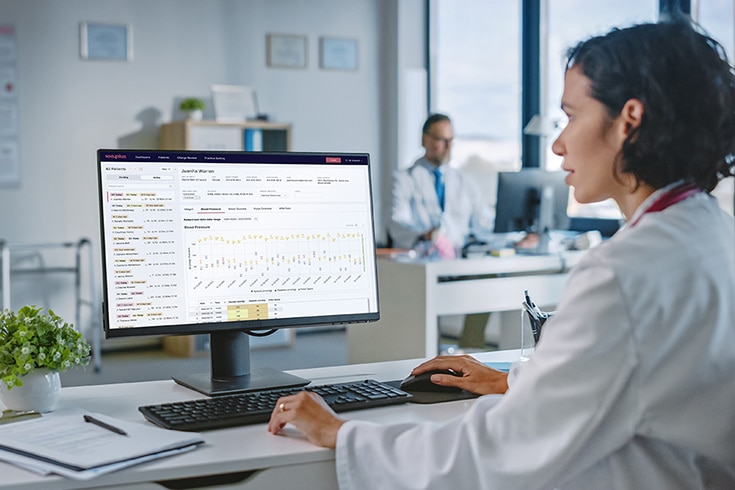The clinical and financial benefits of Remote Patient Monitoring (RPM) are undeniable. Many healthcare providers have leveraged its potential to improve patient engagement, clinical outcomes, and reimbursement. While some practices have achieved remarkable success, others may find their RPM programs falling short of their expectations.
So, whether you’re struggling with patient engagement, operational inefficiencies, or billing, it may be time to reassess, strategize and revitalize your approach. Below are some key strategies to help unlock the full potential of your remote patient monitoring program.
Key Considerations for Evaluating RPM Program Success
When determining the effectiveness of your RPM program, start by defining clear goals. Some examples to consider might include:
- Growth: Set targets for new patient enrollment
- Patient Adherence: Monitor the percentage of patients consistently adhering to RPM requirements and taking their daily readings.
- Patient Engagement: Assess the percentage of patients actively engaging with the care team.
- Clinical Outcomes: Track improvements in key clinical indicators such as reduced hospital readmissions, better blood pressure control, or lower A1C levels.
Identifying Challenges in RPM Program Growth
If your RPM program is encountering slow patient growth, you may consider the following questions to identify potential areas for improvement:
- Patient Identification: Is there an efficient system in place for identifying eligible patients?
- Eligibility: Are enough patients meeting the RPM criteria to meet enrollment goals? Should eligibility criteria be expanded to include more patients?
- Provider Engagement: How are RPM-eligible patients communicated to providers? Is there a system in place to ensure consistency for orders among providers?
- Patient Adherence and Engagement: Sometimes, insufficient staffing can contribute to low patient engagement. If resources are tight, consider collaborating with your RPM partner to explore potential solutions, such as if your partner offers clinical monitoring services.
- Onboarding Process: How many patients decline to participate in the RPM program? What are the most common reasons? Are staff trained to effectively communicate the benefits of RPM to patients?
Continuous Improvement: Regularly Evaluating Your RPM Program’s Success:
Whether your program has been a remarkable success or fallen short of expectations, it is essential to evaluate its performance regularly. Solicit patient and clinician feedback to identify improvement areas and implement necessary adjustments to optimize program effectiveness.
Considering a New Strategy for Your RPM Program?
At 100Plus, we specialize in helping our partners unlock the full potential of their RPM programs. With our deep knowledge and experience, we can provide the guidance and support to ensure success.
Partnering with 100Plus means you have access to:
- Full-service clinical monitoring and billing
- Facilitation of patient outreach, education, and enrollment on behalf of the practice
- An AI-virtual health assistant that provides communication and reminders to ensure patient engagement and adherence
- White-glove service and support for practices and patients
So, don’t let your RPM program fall short. Let us help you unlock the full potential of your RPM program! Schedule a free consultation to evaluate your program and identify areas for improvement.
Start The Path Toward Better Patient Care
Have questions about how remote patient monitoring for healthcare will work for you and your patients? Let’s have a conversation.
Access the Latest RPM News
Stay up to date with the latest news, articles and webinars about remote patient monitoring and telehealth.
"*" indicates required fields



